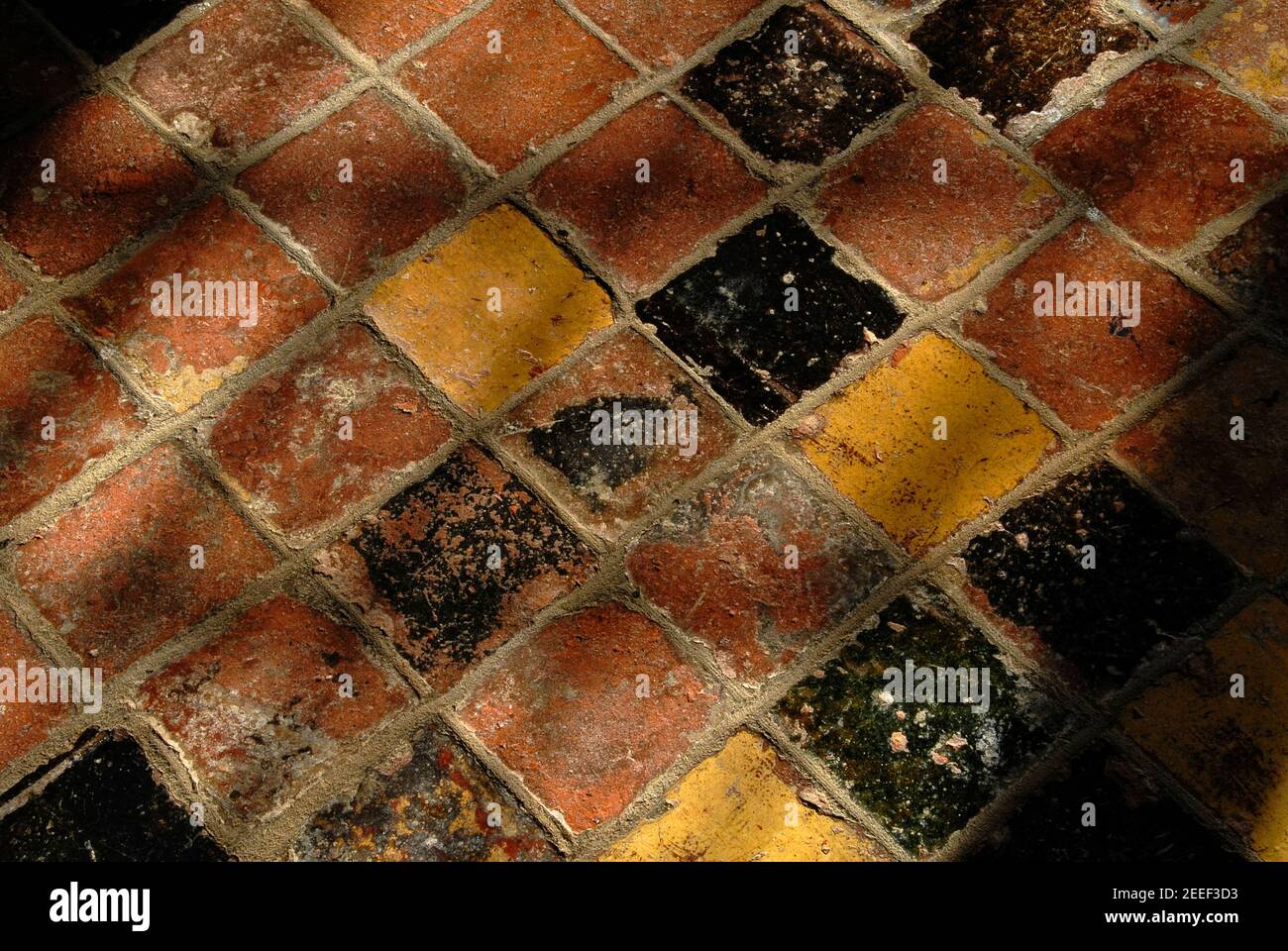Sunlight streaming through a clear glass window casts soft shadows on re-laid medieval encaustic tiles in the pavement of the Parish Church of Saint Augustine at Brookland, Kent, England, UK. Some of the ancient reddish tiles feature remnants of heraldic devices or other symbols in contrasting yellow. St Augustine’s church, dedicated to the first Archbishop of Canterbury, was built around 1250 on an artificial mound in Walland Marsh, part of Romney Marsh.

Image details
Contributor:
Terence Kerr / Alamy Stock PhotoImage ID:
2EEF3D3File size:
28.7 MB (2 MB Compressed download)Releases:
Model - no | Property - noDo I need a release?Dimensions:
3872 x 2592 px | 32.8 x 21.9 cm | 12.9 x 8.6 inches | 300dpiDate taken:
7 March 2008Location:
Parish Church of St Augustine, Brookland, Kent, England, United KingdomMore information:
This image could have imperfections as it’s either historical or reportage.
Brookland, Kent, England, United Kingdom: sunlight streaming through a clear glass window casts soft shadows across re-laid medieval encaustic tiles in the pavement of the mid-13th century Parish Church of Saint Augustine. Some of the ancient reddish encaustic tiles feature remnants of heraldic devices or other symbols in contrasting yellow. Medieval encaustic tiles were made of clay and fired in wood burning kilns to produce a hard glaze on the top surface. They were often decorated with simple inlaid patterns, typically picked out in yellow or white. The hard, glasslike finish caused by vitrification during the firing process made the surface very durable, unlike the softer clay beneath. However, many medieval encaustic tiles have had to withstand centuries of wear from thousands of worshippers’ feet, as well as occasional floods or even fires. Most now have worn and broken surfaces. Original encaustic tiles made by medieval craftsmen survive in many cathedrals, churches and some ancient homes in the United Kingdom and in mainland Europe. In the UK, the 19th Century reign of Queen Victoria saw a revival of the craft, with decorative Minton encaustic tiles made in Staffordshire either replacing worn original tiles in parish churches or used for decorative flooring in many Victorian homes. St Augustine’s church, dedicated to the first Archbishop of Canterbury, was built around 1250 on a low-lying site in Walland Marsh, part of Romney Marsh. Because of the risk of flooding, it was constructed on an artificial mound and with a detached square bell tower. In the 15th century, when this structure was strengthened, it was extended into an octagon, clad with wooden shingles and given an unusual roof, shaped like a candle-snuffer. D0443.A5277